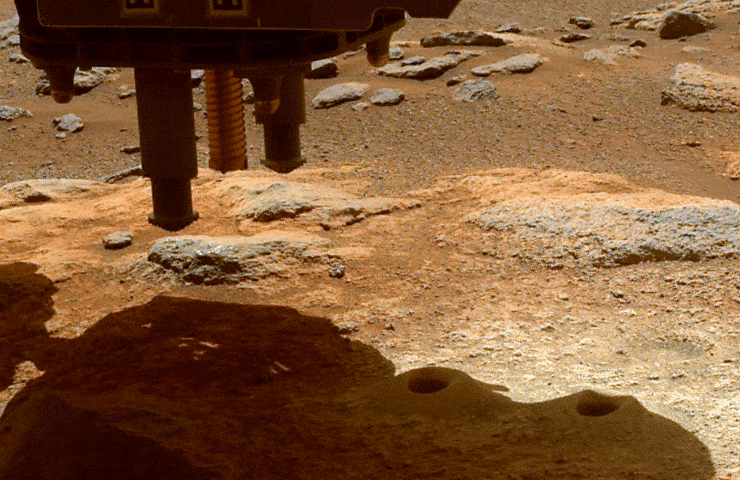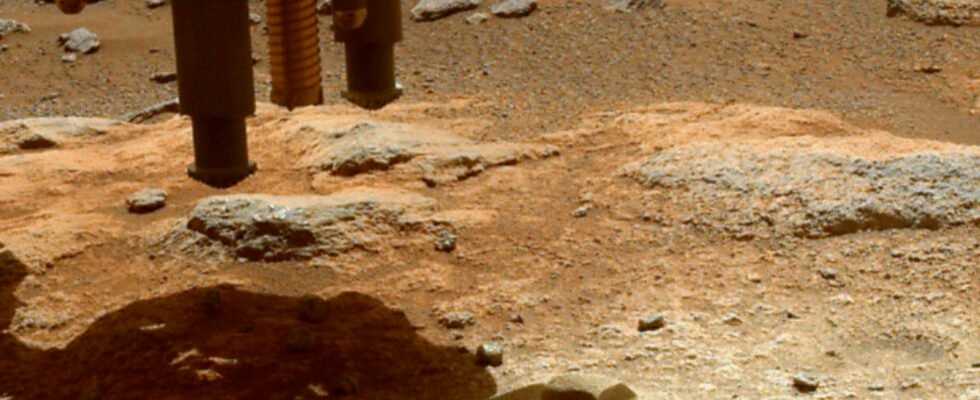Perseverance’s last levy returned to the surface of Mars. Hampered by debris, the rover had no choice but to eject its last sample, instead of storing it as normally expected.
The Perseverance rover was sent to Mars with the goal of collecting soil and rock samples there, then storing them. But, for the first time, he had to do the opposite: reject one of his samples on the planet. Nasa said it happened correctly, on January 21, 2022.
It was with its sixth Martian sample that Perseverance encountered a difficulty. This sampling took place at the end of December 2021. However, debris blocked the transfer of the sample tube: it got lodged in the carousel system, which contains the various drill bits of the rover. NASA has therefore planned a plan to help its rover get rid of these unwanted stones. It involved emptying the tube that had been filled with the sample.
Tube shaken for more than 3 minutes
The following images, obtained by the rover on January 15, show how Perseverance got rid of almost all of the contents of its sample tube (tube number 261). The open end of the tube was pointed towards the surface of Mars, then the tube was shaken for just over 3 minutes (using the drill motion).
On these other images, also obtained the same day, we can see the surface of Mars more closely. Perseverance obtained a view before and after ejecting the contents of the tube: you can clearly see the fragments of its sample on the ground.

The tube can be used again
Then, on January 17, most of the debris that was in the carousel could be dislodged by rotating the structure. Two small pebbles remained in place, but the space agency estimates that they should not pose a problem for the continuation of the activities.
The good news is that the sample tube emptied by Perseverance can be used again. NASA thus plans to use it to store another sample taken from the same rock.
